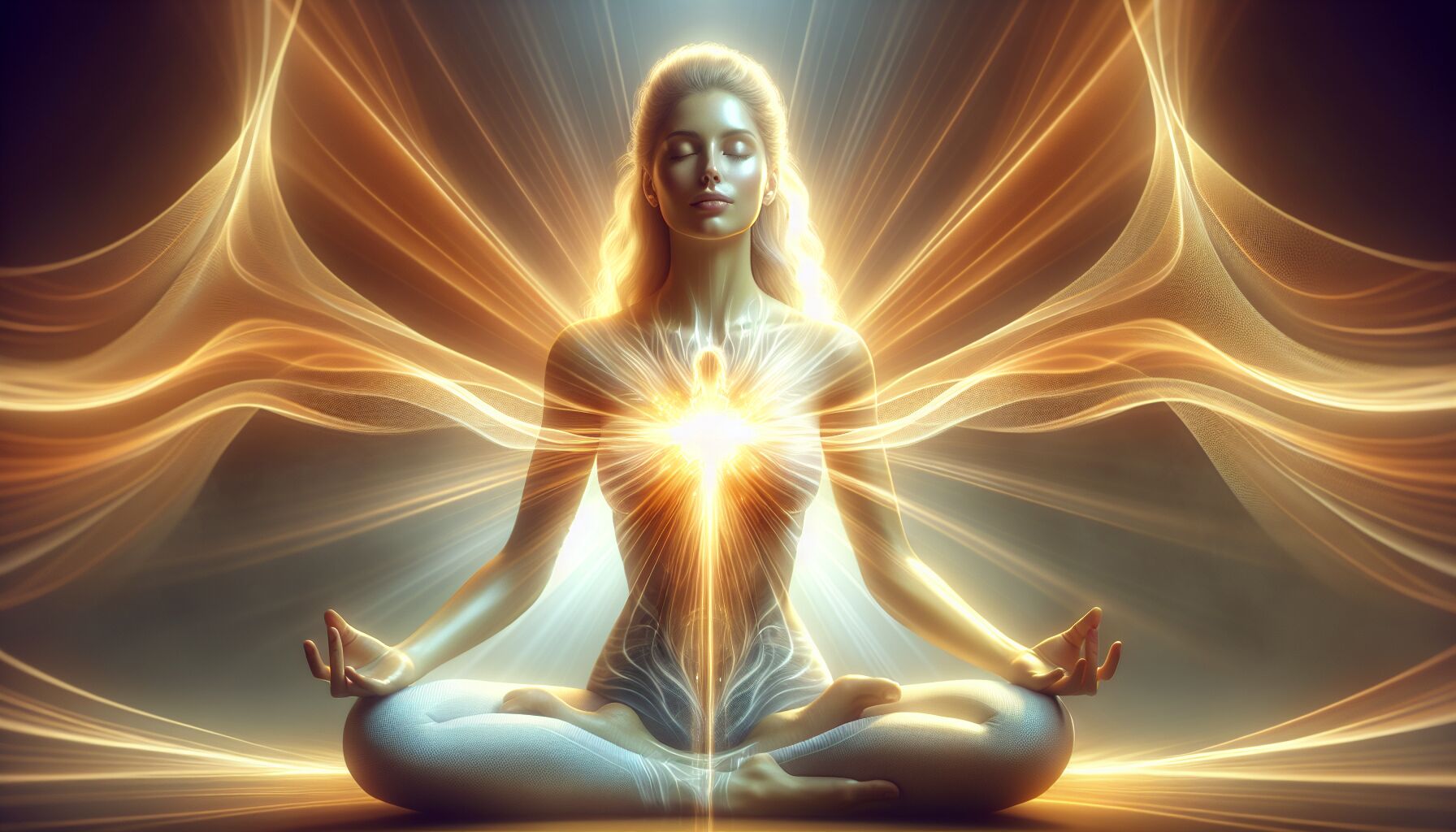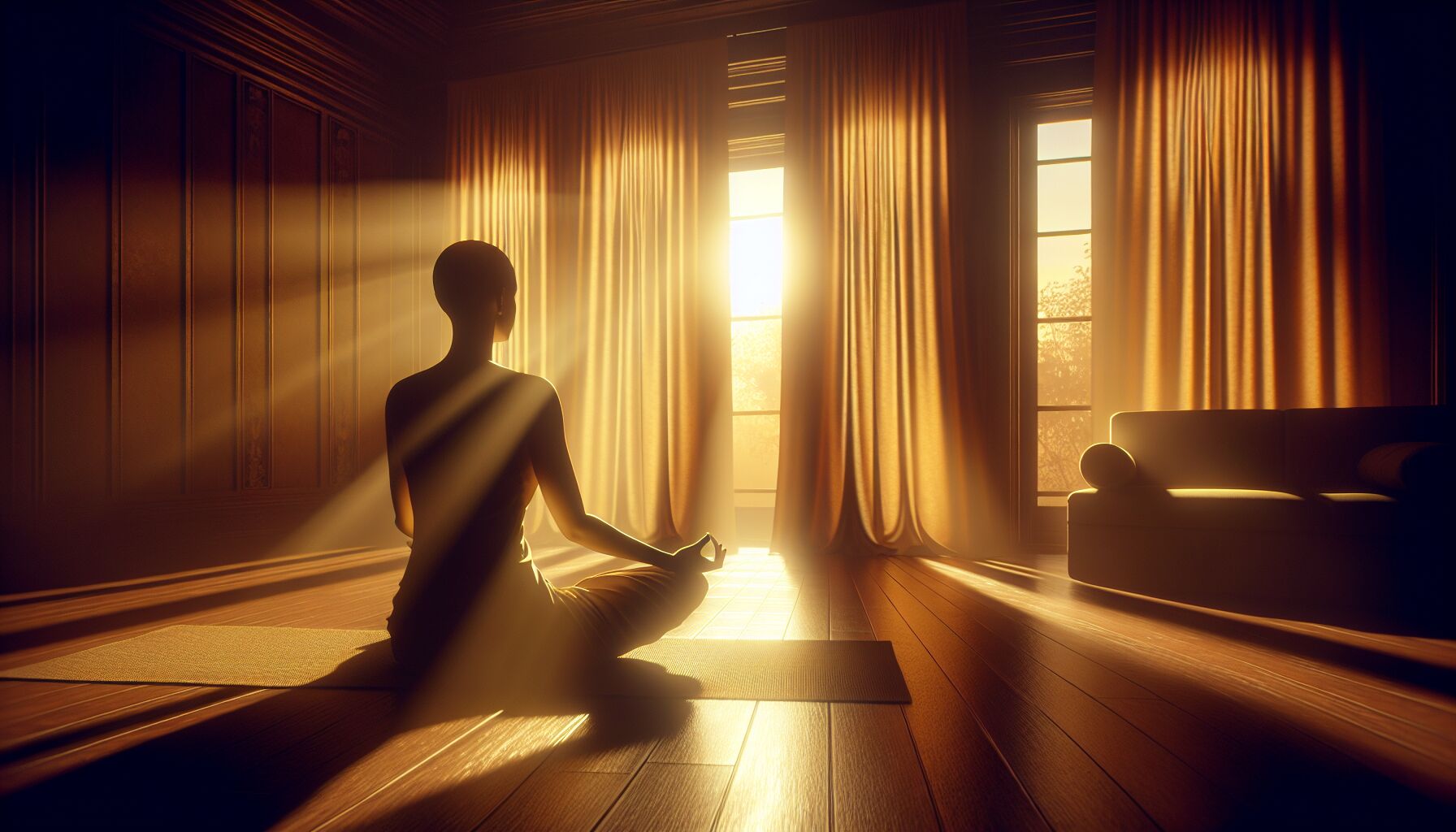 Modern neuroscience is finally starting to catch up with what yogis, monks, and medicine people have known for centuries: the breath changes the brain. On the surface, breathing seems automatic—inhale, exhale, repeat. But start paying attention, and it quickly becomes clear that how we breathe doesn’t just reflect our state of being… it also shapes it.
Modern neuroscience is finally starting to catch up with what yogis, monks, and medicine people have known for centuries: the breath changes the brain. On the surface, breathing seems automatic—inhale, exhale, repeat. But start paying attention, and it quickly becomes clear that how we breathe doesn’t just reflect our state of being… it also shapes it.
Controlled breathing techniques—what some traditions call pranayama—don’t just calm the nervous system; they literally rewire it. A 2018 study published in the journal Frontiers in Human Neuroscience suggests that slow, rhythmic breath changes activity in the default mode network (DMN), the part of the brain associated with rumination, ego identity, and the “story” of self. When the DMN quiets down, something unexpected happens: there’s more space for presence, intuition, and conscious self-awareness to arise. In simpler terms, we stop overthinking and start being.
Why’s that important? Because that shift—from thinking to being—is where many people brush up against awakenings they weren’t expecting. Not fireworks and halos. Just quiet recognition. Peace. The kind of peace you feel in your bones. That’s where real expansion begins.
“Feelings come and go like clouds in a windy sky. Conscious breathing is my anchor.” — Thich Nhat Hanh
And don’t be fooled—this isn’t woo. It’s mechanics. Breath directly influences the vagus nerve, which governs what’s called the parasympathetic nervous system: your rest-and-digest mode. When you’re breathing slowly and deeply, you’re sending a signal to your body that you’re safe. That signal translates into hormone regulation—cortisol decreases, melatonin increases, and dopamine stabilizes. Brain fog starts lifting, emotional reactivity drops, and memory improves. You begin feeling more like yourself, and sometimes… more than yourself.
The science goes further.
Researchers at Stanford and Harvard have shown that particular breathing rhythms—especially ones that emphasize extended exhales—can significantly reduce anxiety and even impact gene expression over time. That’s right. Changing your breathing can potentially change how your genes activate. Talk about self-healing.
The thing is, breath doesn’t just influence brain chemistry. It impacts brain waves, too. Theta and alpha waves—those associated with meditation, creativity, and deep relaxation—increase during extended breathwork sessions. This is why people often report deep visualizations, heightened senses, or spontaneous emotional releases during breathing practices. These states aren’t imagined—they’re measurable.
And yet, the real impact can’t quite be captured in a lab.
Here’s the paradox: breathwork is profoundly physiological, but its effects are often deeply spiritual. Not because it zaps you into alternate dimensions (though some folks might describe it that way). But because it creates just enough space within the noise for you to sense what’s been hiding underneath your busy mind. And that—this quiet awareness—is the spark behind every true awakening.
Let me explain another piece. Breath patterning also affects interoception, the body’s internal awareness system. That heightened sensitivity means you’re not just mentally aware—you’re somatically aware. You start hearing the body’s whispers before they become screams. This sensitivity has real-world benefit. It’s how you begin recognizing when you’re out of sync—emotionally, physically, even spiritually—before it shows up as illness or burnout.
Breathwork teaches responsiveness instead of reactivity.
Think of it like composting the emotional leftovers of your day. You’re not bottling things up, and you’re not dumping them all over someone else. You’re processing them through the rhythmic intelligence of your own breath. That’s practical alchemy. Everyday courage. And yes, a pathway to expansion.
So whether you’re doing a round of box breathing before work, practicing kapalabhati on your cushion, or letting out that long sigh in traffic, remember this: you’re not just breathing. You’re shaping your inner landscape—and maybe, without knowing it, beginning the slow work of spiritual awakening.
Ancient traditions and the role of breath in spiritual practices
The breath has always been more than just a doorway to survival—it’s the bridge between body and spirit in almost every ancient tradition worth its salt. Long before biomedical research could explain why slowing the inhale reduces cortisol, the sages and seers across cultures were already tuning breath like an instrument. They weren’t chasing data—they were chasing presence.
Start in India. The yogic tradition didn’t stumble into breathwork by accident—it built the entire system of pranayama around it. The word itself breaks down to “prana” (life force) and “ayama” (to extend or regulate). Pranayama wasn’t considered optional. It was foundational. A core part of the Eight Limbs of Yoga, and not the stretchy kind—the inner discipline that prepared the seeker for deeper states of consciousness. Whether through nadi shodhana (alternate nostril breathing) for balancing the body’s energies, or kapalabhati (skull-shining breath) to stir and awaken internal fire, each pattern was seen as both medicine and mirror. And guess what? Practitioners didn’t need clickbait or cold plunges to create resilience. They had the breath—and it worked.
Drift west and the pattern holds. In ancient Greece, “pneuma” meant both breath and soul. Aristotle, not exactly a New Age influencer, recognized breath as a movement of the spirit principle within the body. In Taoist China, it shows up as “qi” or “chi”—the vital force flowing through breath-based practices like qigong and tai chi. These weren’t gentle stretches to stave off osteoporosis. They were deeply encoded rituals designed to cultivate inner strength, clarity, and deeper self-healing through mindful respiration.
And then there’s the Indigenous wisdom across the Americas and beyond—often passed mouth-to-mouth, hand-to-heart. Sweat lodge ceremonies, vision quests, even simply sitting with the wind—the breath wasn’t something isolated; it was woven into the land, seasons, fire, and heartbeat of the people. Controlled breathing inside the lodge didn’t just cleanse the body—it shifted perception. It cracked the shell of identity wide enough to let something older and wiser come through. Not as epiphany, but as remembrance.
“Prayer is when you talk to God. Meditation is when you listen.” — Diana Robinson
Breath, in that sense, is both.
Even Christianity—often seen as breathless and stoic in its modern practice—has roots steeped in this wisdom. The Hebrew word “ruach” and the Greek “pneuma” both evoke breath and spirit. In Genesis, breath is the animating force, not just a biological trigger. “God breathed into his nostrils the breath of life” — that wasn’t about oxygen. That was about becoming aware.
So what happened? Somewhere along the way, modern life started prioritizing performance over presence. Fast food, shallow breathing, screens shaping postures that turn lungs into tight little boxes. Fatigue followed. Anxiety rose. And yet, the ancient practices never vanished—they just waited. You’re seeing them return now—not as trend, but as recovery. Not as performance-enhancing hacks, but as tools to re-engage with something honest.
This spiritual recalibration through breath doesn’t need incense or Sanskrit—although they have their place. It needs sincerity. Attention. Willingness to sit with the breath not as a technique, but as a companion.
Because here’s the deal: spiritual expansion doesn’t arrive like thunder. It sneaks in through the silence between your thoughts. Breathwork carves out that silence—one pause, one sigh, one moment of stillness at a time.
When you inhale with awareness, you’re not just feeding your cells—you’re entering a lineage older than language. A ceremony encoded in your DNA. That’s what makes breath a spiritual inheritance. It belongs to everyone, but only those willing to slow down will receive it.
There’s a quiet humility in that.
We talk a lot about self-healing, but what if healing starts by simply noticing you’ve been holding your breath—not just in your lungs, but across your whole life? The tensions, the half-swallowed words, the feelings that haven’t had air—they begin to release when you let your breath do what it’s always known how to do: find rhythm, soften edges, invite awareness.
After all, the breath doesn’t lie. It won’t flatter you or flatter your image of becoming more “spiritual.” But it will strip away pretense, if you let it.
And right there—raw, clear, and breath by breath—you’ll begin to remember what was never lost.
How breathwork facilitates spiritual awakening
 Let’s not kid ourselves: spiritual awakening isn’t all lotus blossoms and blissed-out detachment. Sometimes it’s messy. Sometimes it’s terrifying. And most often, it’s quiet—so quiet you almost miss it. But here’s where breathwork steps in—not like a guru or a shortcut, but like an old friend tapping you on the shoulder. Reminding you of what you’ve forgotten to feel.
Let’s not kid ourselves: spiritual awakening isn’t all lotus blossoms and blissed-out detachment. Sometimes it’s messy. Sometimes it’s terrifying. And most often, it’s quiet—so quiet you almost miss it. But here’s where breathwork steps in—not like a guru or a shortcut, but like an old friend tapping you on the shoulder. Reminding you of what you’ve forgotten to feel.
It’s not about chasing states—it’s about learning to stay.
Take a look at how we react under stress. Shoulders clench. Breath shortens. We brace ourselves like something’s about to explode. The body doesn’t know if you’re about to speak your truth or dodge a falling tree—it just knows “unsafe.” So it clamps down. The diaphragm tightens, the rib cage narrows, and suddenly you’re not breathing; you’re barely surviving.
Now flip that. Bring intention into the breath. Open the ribcage, drop into slower, deeper inhales, and most important—lengthen the exhale. You start telling the body, “We’re okay now.” And under that safety, hidden beneath years of holding, something extraordinary starts to unfold: awareness. Not the kind you learn at a retreat or read in a book—but the kind that bubbles up from the bones.
It’s no coincidence that many people report spontaneous insight, emotional catharsis, or even a sense of deep interconnectedness during extended breathwork sessions. This isn’t a side-effect—it’s the main event. When breath opens internal space, it clears the channel. You’re left with a raw encounter—possibly with buried grief, possibly with awe… often, both at once.
“The wound is the place where the Light enters you.” — Rumi
But don’t misunderstand. This isn’t magic—it’s work. The breath acts like spiritual sandpaper. It smooths out what’s jagged, but not always gently. Repressed memories get stirred. Old identities crack. You might cry over something you didn’t know hurt. But that’s part of real self-healing. It’s uncomfortable, maybe even disorienting. And yet—it’s a homecoming.
Here’s where breath as spiritual discipline moves beyond the cushion. You begin noticing your breath during confrontation. You pause before reacting. You start asking: “What am I actually feeling?” instead of just playing old scripts. That kind of awareness reshapes how you show up in life—partly because you’re not just trying to “fix” or “improve” yourself anymore. You’re engaging. You’re listening. The masks start to fall off, one quiet exhale at a time.
And yes, sometimes the experience does take you to places that feel cosmic. In longer sessions—rebirthing breathwork, holotropic breathing, or rhythmic pranayama like Bhastrika—practitioners often describe sensations of being more than their body. Not in some fantastical escape sense, but as though they’ve peeled back identity and found something simple underneath: aliveness. Sometimes it feels like light, sometimes like vastness. Always, it’s real.
What most people call “spiritual awakening” isn’t a destination—it’s a gradual, often cyclical remembering. Think of it like a garden. Each breath is both shovel and seed: clearing, planting, nurturing. The fruit doesn’t show up instantly—but the inner soil is changing every time you come back to yourself. Through grief, through joy, through ordinary moments when you remember you’re present.
And just like with real gardens, attention matters.
That’s why breathwork has always been viewed as a sacred art in yogic systems. In pranayama, breath isn’t just a tool—it’s relationship. Regulating the breath isn’t about control. It’s about intimacy with life force. You’re not trying to escape from your human experience—you’re learning to inhabit it, more fully and consciously.
Call it spiritual expansion if you like. But look closely—it’s just becoming more you.
So, if you’re wondering whether you’re “doing breathwork right” or if it’s “working,” pause. Ask: Am I here? Am I honest with myself? Can I let this breath—this one right now—be enough? No need for visions or breakthroughs. Sometimes healing shows up as the courage to stop chasing healing altogether.
That’s when awakening sneaks in—like morning light through half-open curtains. Soft. Steady. Unexpected.
And guess what? It keeps coming back—every time you return to your breath like it’s sacred soil.
Because it is.
 DS Haven In Light Of Things
DS Haven In Light Of Things






